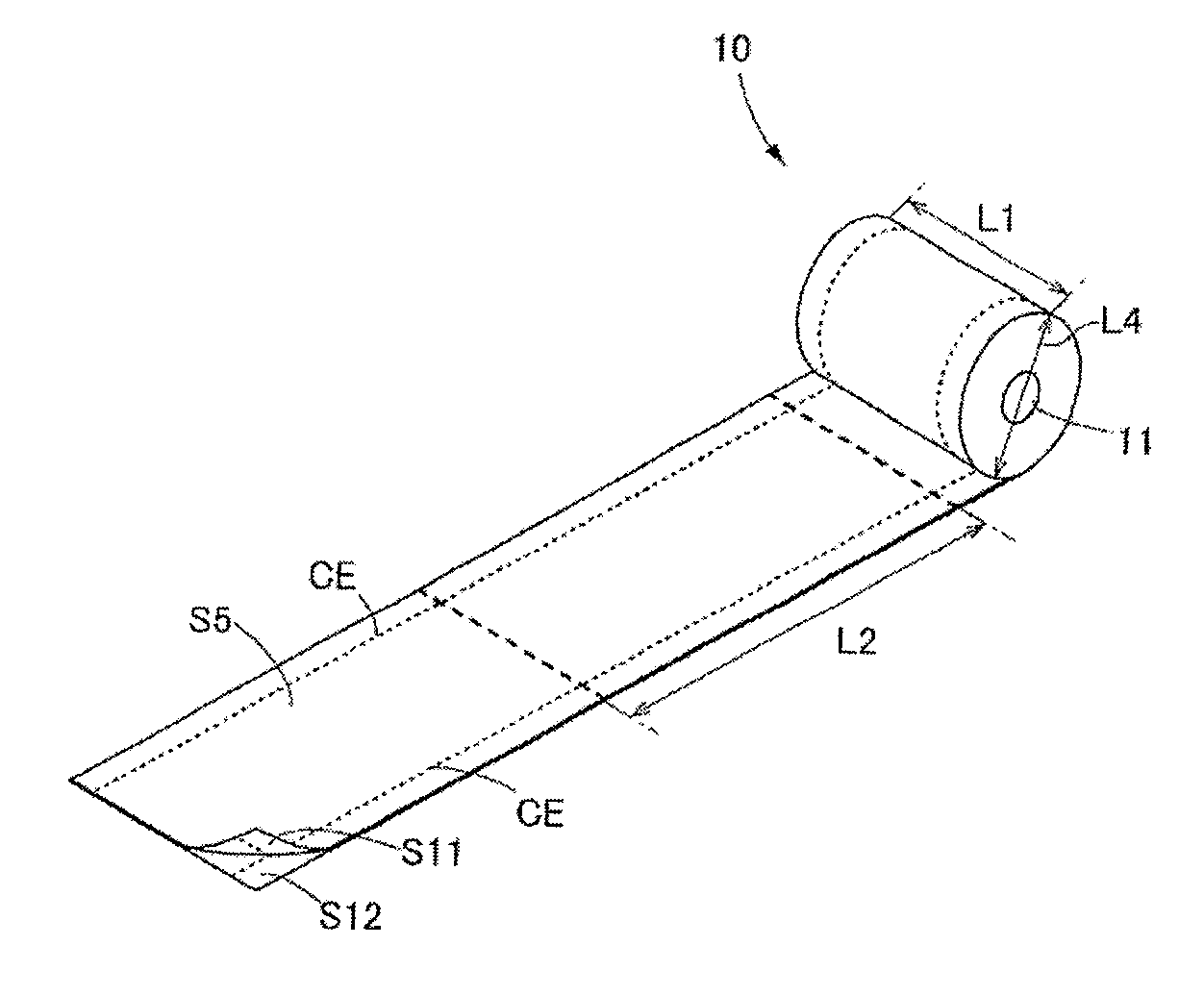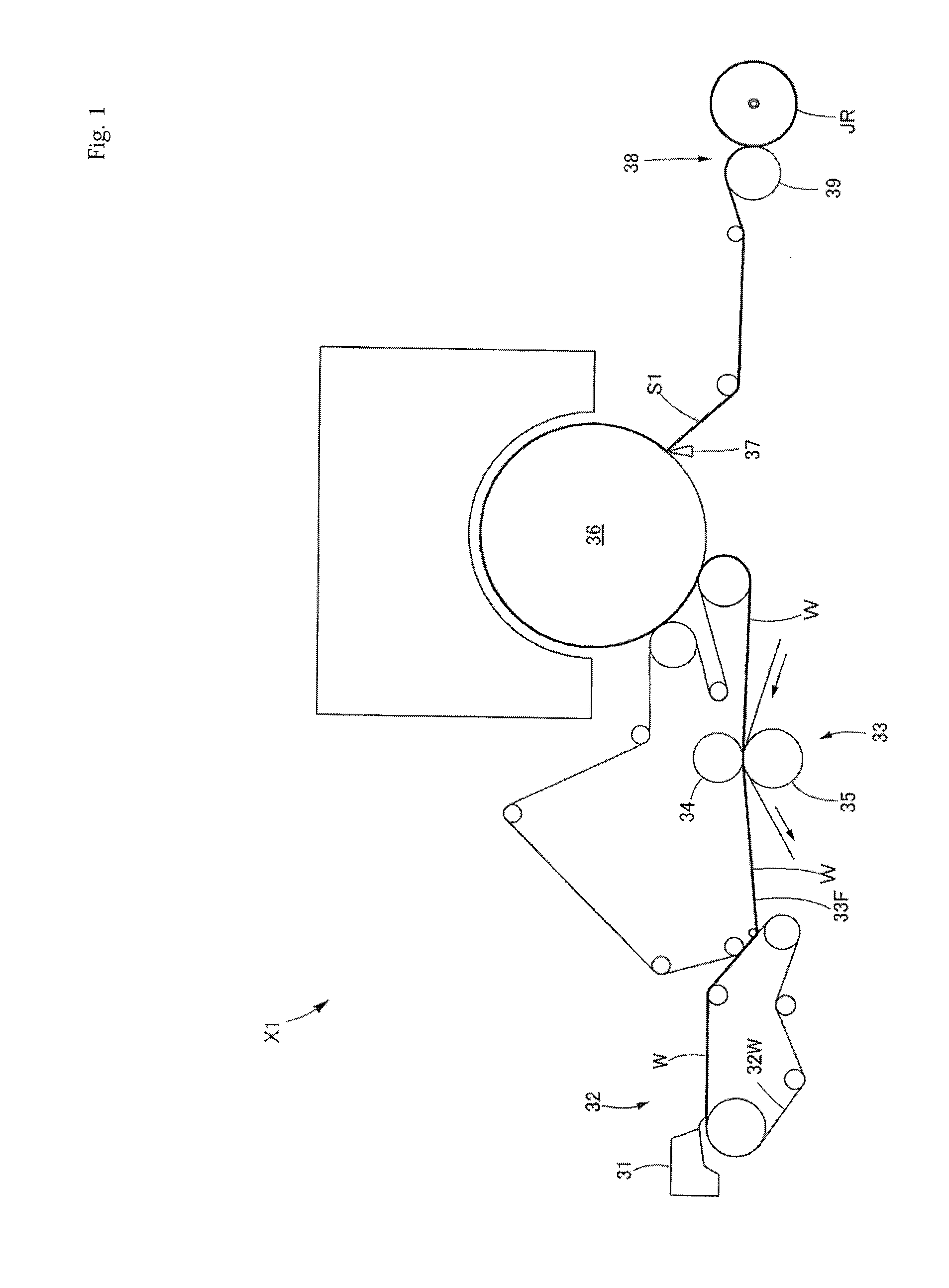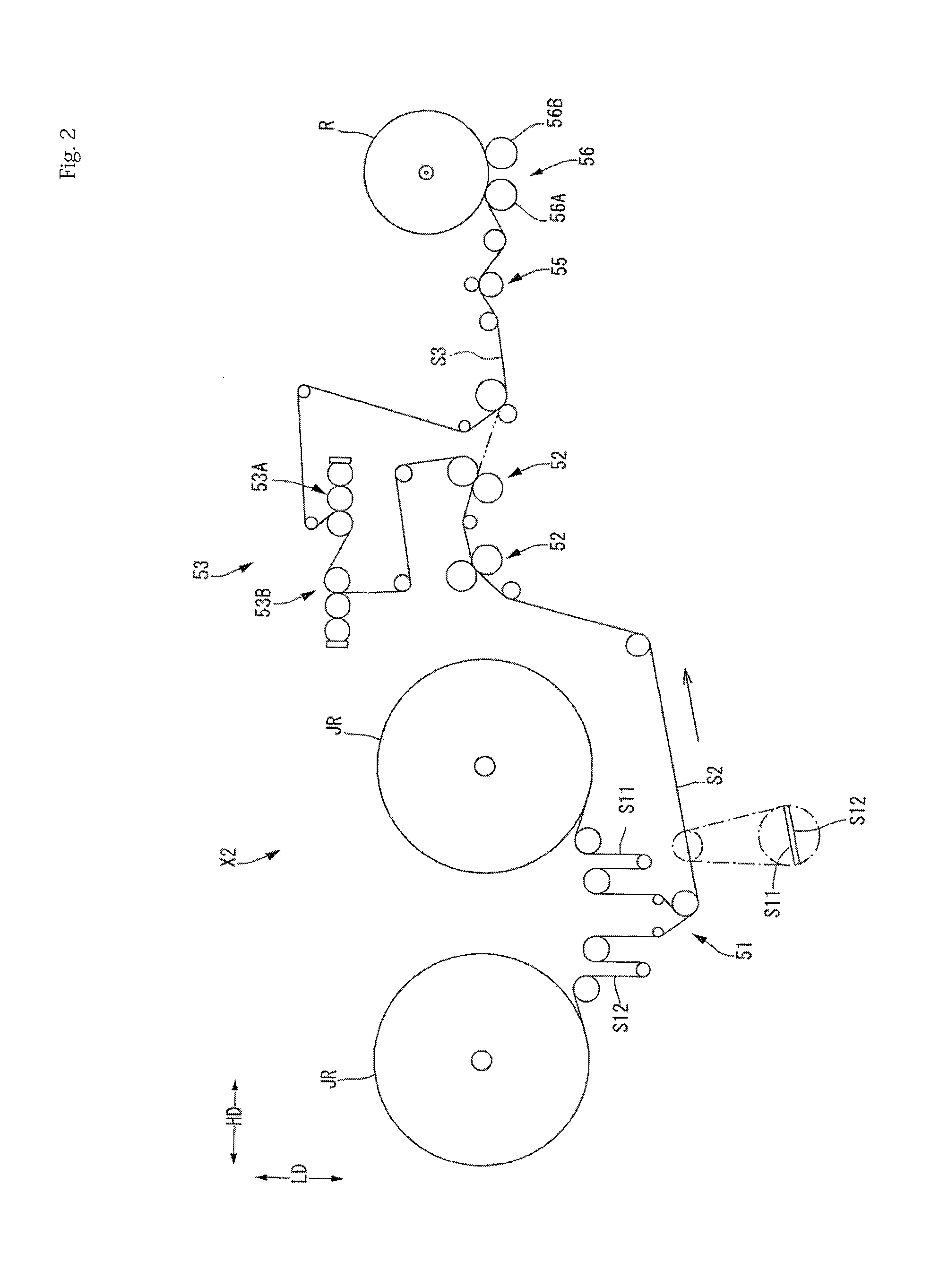Method for manufacturing toilet roll products and toilet roll products
- Summary
- Abstract
- Description
- Claims
- Application Information
AI Technical Summary
Benefits of technology
Problems solved by technology
Method used
Image
Examples
first embodiment
; Embossing is not Performed
[0141][Paper-Manufacturing Process: Method and Facility for Manufacturing Primary Paper Roll]
[0142]A primary paper roll JR (referred to as a jumbo roll) according to the present invention may be manufactured as below by an exemplary paper manufacturing machine X1 illustrated in FIG. 1.
[0143]First, a paper material, which has been adjusted in advance by adding appropriate chemicals from a head box 31 to pulp slurry, is supplied onto a wire 32w of a wire part 32 so as to form wet paper W (forming process). Then, the wet paper W is conveyed to a felt 33F of a press part 33 and is dewatered by being nipped between a pair of dewatering rolls 34 and 35 (dewatering process).
[0144]Subsequently, the dewatered wet paper W is attached to a surface of a Yankee dryer 36 so as to be dried. Then, the dried paper was separated therefrom with a doctor blade 37 so as to be dry base paper S1 (single-sheet from the primary paper roll as described later) with crepe (drying pr...
second embodiment
is Performed by Ply Machine
[0227]Subsequently, the second embodiment of the present invention will be described by particularly referring to FIGS. 9 and 10. The second embodiment is the same as the first embodiment except that so-called single embossing is performed on multi-ply continuous sheets S2 and S3 in the ply machine X2, thus, the other matters are as stated before.
[0228]As illustrated in FIG. 9, in the ply machine X2 according to the second embodiment, an embossing unit 60 is provided at the post stage of a chemicals applying unit 53. Then, in the embossing unit 60, embossing is performed on the multi-ply continuous sheet S3 applied with chemicals by the chemicals applying unit 53. Furthermore, the embossing mentioned herein is different from the above mentioned ply-bonding CE, which prevents the ply-separating and is applied to the entire sheet surface so as to improve bulkiness, design property, and surface property of the sheet, referred to as micro embossing, macro embo...
third embodiment
is Performed by Ply Machine
[0237]Subsequently, the third embodiment of the present invention will be described by particularly referring to FIG. 11. The third embodiment is the same as the first embodiment except that so-called double embossing is performed on a multi-ply continuous sheet in the ply machine X2, and by employing this configuration, some requirements related thereto are caused, thus, the other matters are as stated before. Further, as for an embossing unit 60, a structure in which the embossing is performed, conditions for embossing, and the like are the same as those of the second embodiment, and these matters are as stated before.
[0238]Hereinafter, difference from the first embodiment and the second embodiment will be described in detail. The ply-machine X2 according to the third embodiment illustrated in FIG. 11 is sequentially provided with a multi-ply forming unit 51, which performs multi-ply forming on single-sheets S1 and S12 from primary paper rolls so as to f...
PUM
| Property | Measurement | Unit |
|---|---|---|
| Diameter | aaaaa | aaaaa |
| Speed | aaaaa | aaaaa |
| Width | aaaaa | aaaaa |
Abstract
Description
Claims
Application Information
 Login to View More
Login to View More - R&D
- Intellectual Property
- Life Sciences
- Materials
- Tech Scout
- Unparalleled Data Quality
- Higher Quality Content
- 60% Fewer Hallucinations
Browse by: Latest US Patents, China's latest patents, Technical Efficacy Thesaurus, Application Domain, Technology Topic, Popular Technical Reports.
© 2025 PatSnap. All rights reserved.Legal|Privacy policy|Modern Slavery Act Transparency Statement|Sitemap|About US| Contact US: help@patsnap.com



